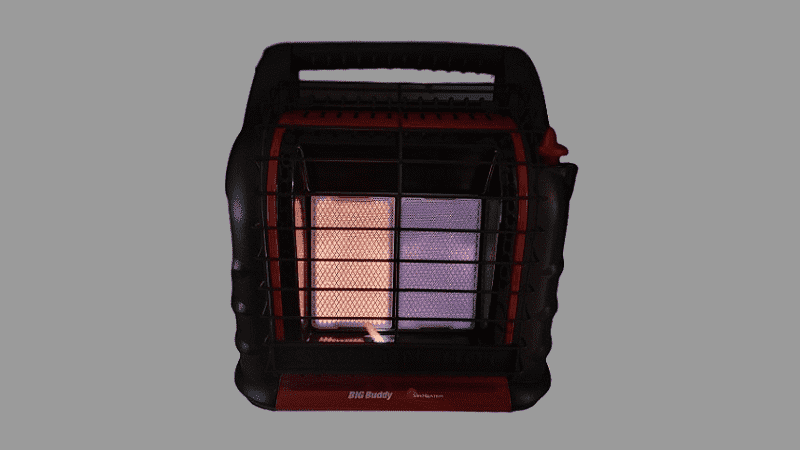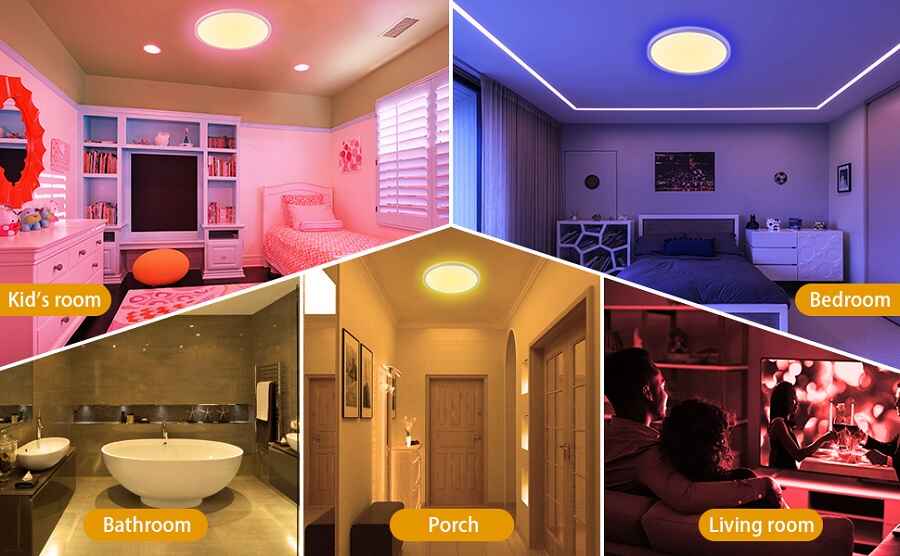Are Propane Heaters Dangerous For Your Health? If you want to know the exact answer to this question, I would definitely love to describe it with some valid information.
Quick Answer:
Yes, Propane Heaters are quite dangerous if you are using them on a regular basis, Propane heaters are a popular and convenient way to heat homes and other spaces, However, they may pose some risks to your health, it can damage your skin, lungs, Headache, Heart attacks, Fatigue, digestive and Nervous system breakdown.
Are Propane Heaters Dangerous For Your Health? What You Need to Know
Propane Heaters consume oxygen and produce Carbon Monoxide that is really dangerous for your health, so your skin can also be damaged. Carbon monoxide (CO) is a colorless and odorless gas that is produced by incomplete combustion of fuels such as gasoline, propane, natural gas, and wood.
It is often referred to as the “silent killer” because it is virtually undetectable without specialized equipment. CO can build up in enclosed spaces, such as homes, garages, and cars, and can lead to serious health problems, and even death.
What Are the Health Effects of Carbon Monoxide?
Exposure to carbon monoxide can lead to a variety of health effects. At low levels, symptoms can include
- Headache
- Nausea
- Dizziness
- Shortness of breath
At higher levels, symptoms can become more severe and can lead to confusion, loss of consciousness, and even death. Infants, elderly individuals, and individuals with certain medical conditions, such as heart disease, are particularly susceptible to the harmful effects of carbon monoxide.
Preventing Carbon Monoxide Exposure:
Preventing exposure to carbon monoxide is crucial in protecting yourself and your family. The following are some tips to help reduce the risk of carbon monoxide exposure:
- Install carbon monoxide detectors in your home and make sure they are working properly.
- Have gas appliances inspected and maintained regularly by a qualified technician.
- Never use portable fuel-burning devices, such as generators or grills, inside your home or garage.
- Do not leave your car running in an enclosed space, such as a garage, even with the garage door open.
- Open windows and doors to ensure proper ventilation when using gas appliances or wood-burning stoves.
Do Propane Heaters Cause COPD?
Propane is a popular fuel choice for heating homes and other spaces, but it may pose some risks for people with chronic obstructive pulmonary disease. When propane is burned, it releases a number of gases and particles into the air, including carbon monoxide, nitrogen oxides, and particulate matter. These pollutants can worsen COPD symptoms and increase the risk of exacerbation, hospitalizations, and other complications.
In addition to the potential harm caused by the pollutants released by propane heat, COPD patients may also experience discomfort or irritation from the dry, warm air produced by propane heating systems. This can cause further inflammation in the airways, exacerbating COPD symptoms.
Tips for COPD Patients Using Propane Heaters:
If you have COPD and use propane heat, there are several steps you can take to reduce your risk of harm:
Ensure your heating system is well-maintained:
Regular maintenance can help ensure that your propane heating system is running efficiently and safely. This can include cleaning and replacing filters, checking for leaks, and inspecting the system for any signs of wear or damage.
Install a carbon monoxide detector:
Carbon monoxide is a colorless, odorless gas that can be deadly if inhaled in large quantities. Installing a carbon monoxide detector in your home can alert you to any dangerous levels of this gas.
Improve indoor air quality:
There are several ways to improve indoor air quality and reduce the amount of pollutants in the air. These can include using an air purifier, opening windows to increase ventilation, and avoiding the use of certain household products that can release harmful chemicals.
Consider alternative heating options:
If you’re concerned about the potential risks of propane heat for your COPD, you may want to consider alternative heating options such as electric heat, radiant floor heating, or geothermal heating.
Are Propane Heaters bad for your Skin?
Since, Propane Heaters produce Carbon Monoxide that is not directly dangerous for your skin, as it does not come into contact with it in the same way that other chemicals or pollutants can. However, carbon monoxide poisoning can have indirect effects on your skin due to the lack of oxygen in your bloodstream.
When you breathe in carbon monoxide, it enters your bloodstream and binds to hemoglobin, reducing the amount of oxygen that can be carried by your blood. This can lead to a variety of health effects, including skin discoloration and other skin-related issues.
One potential effect of carbon monoxide poisoning on the skin is a bluish tint, known as cyanosis. Cyanosis occurs when the oxygen levels in your blood are low, causing your skin to appear blue or purple. This can be particularly noticeable in areas such as the lips and fingertips.
In severe cases of carbon monoxide poisoning, where oxygen levels in the blood are critically low, the skin may also appear pale or gray. This is a sign that the body’s cells are not receiving enough oxygen to function properly, and can be a life-threatening condition if left untreated.
In addition to skin discoloration, carbon monoxide poisoning can also cause other skin-related symptoms such as dryness, itching, and irritation. These symptoms are often a result of the body’s response to the lack of oxygen in the bloodstream, which can lead to dehydration and other complications.
To avoid the indirect effects of carbon monoxide poisoning on your skin, it’s important to take steps to prevent exposure. This includes ensuring proper ventilation in areas where fuel-burning appliances are used, installing carbon monoxide detectors in your home, and having your appliances regularly inspected and maintained by a qualified professional. If you suspect carbon monoxide poisoning, seek medical attention immediately.
Are Propane Heaters Bad for your Digestive System?
Yes, propane heaters are bad for your digestive system because they produce Carbon Monoxide (CO) a colorless, odorless gas that can be dangerous if inhaled in large amounts. When you breathe in carbon monoxide, it enters your bloodstream and binds to hemoglobin, reducing the amount of oxygen that can be carried by your blood.
The digestive system requires a steady supply of oxygen to function properly, as it plays a crucial role in breaking down food and absorbing nutrients. If carbon monoxide levels in the bloodstream are too high, the body’s cells may not receive enough oxygen to function properly, including those in the digestive system.
Ingesting carbon monoxide can also cause gastrointestinal symptoms, including nausea and vomiting, which can lead to dehydration and other complications.
To avoid the potential negative effects of carbon monoxide on your digestive system, it’s important to take steps to prevent exposure. This includes ensuring proper ventilation in areas where fuel-burning appliances, such as propane heaters, are used, installing carbon monoxide detectors in your home, and having your appliances regularly inspected and maintained by a qualified professional. If you suspect carbon monoxide poisoning, seek medical attention immediately.
Are Propane Heaters Dangerous for your Eyes?
No, Carbon monoxide (CO) is not directly dangerous for your eyes, as it does not come into contact with them in the same way that other chemicals or pollutants can. However, carbon monoxide poisoning can have indirect effects on your eyes due to the lack of oxygen in your bloodstream.
When you breathe in carbon monoxide, it enters your bloodstream and binds to hemoglobin, reducing the amount of oxygen that can be carried by your blood. This can lead to a variety of health effects, including vision-related issues.
One potential effect of carbon monoxide poisoning on the eyes is blurred vision or vision loss. This occurs when the lack of oxygen in the bloodstream affects the function of the optic nerve, which carries visual information from the eyes to the brain. In severe cases of carbon monoxide poisoning, where oxygen levels in the blood are critically low, this can lead to permanent vision loss.
In addition to blurred vision and vision loss, carbon monoxide poisoning can also cause other eye-related symptoms such as eye pain, sensitivity to light, and even double vision. These symptoms are often a result of the body’s response to the lack of oxygen in the bloodstream, which can lead to dehydration and other complications.
To avoid the indirect effects of carbon monoxide poisoning on your eyes, it’s important to take steps to prevent exposure. This includes ensuring proper ventilation in areas where fuel-burning appliances are used, installing carbon monoxide detectors in your home, and having your appliances regularly inspected and maintained by a qualified professional. If you suspect carbon monoxide poisoning, seek medical attention immediately.
Conclusion:
Carbon monoxide is a dangerous gas that can have serious health effects. It is important to take precautions to reduce exposure and protect yourself and your family. By following the tips outlined in this article, you can help prevent carbon monoxide exposure and ensure a safe and healthy environment.





0 Comments